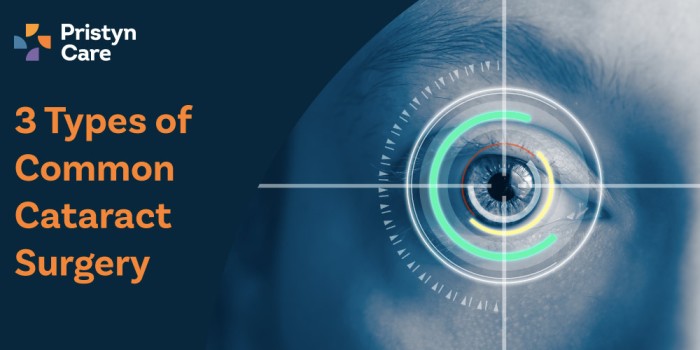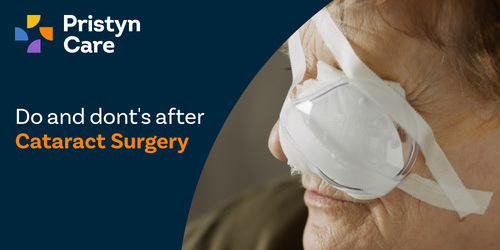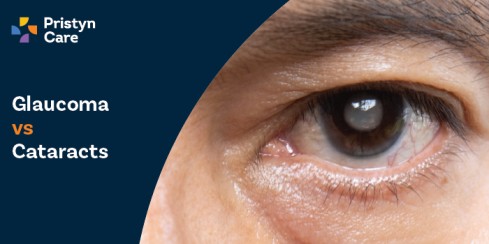![]() Views: 153
Views: 153
3 Types of Common Cataract Surgery: Choose the Right One
Dedicated Support at Every Step!
Our Doctors are available 24 hours a day, 7 days a week to help you!
Be it you are experiencing the early stages of cataract development or are ready for surgery, understanding the specific procedures available is key. We will break down the benefits and considerations of each type, empowering you and your ophthalmologist to select the most suitable approach for restoring your clear vision.
Table of Contents
What is a Cataract?
A cataract develops when proteins in the eye’s lens clump together, causing the lens to become cloudy. This cloudiness can hinder light from passing clearly through the lens, causing some loss of vision. Unlike conditions that affect the surface of the eye, cataracts develop within the lens itself.
Causes and Symptoms of Cataracts
Cataracts can occur due to several factors:
- Age: Most cataracts develop as part of ageing. As we grow older, the proteins in the lens can start to degrade and clump together, resulting in cloudy vision.
- Medical conditions: Diseases like diabetes can increase the risk of developing cataracts.
- Environmental factors: Prolonged exposure to ultraviolet sunlight and radiation can contribute to cataract formation.
- Lifestyle choices: Smoking and excessive alcohol consumption can accelerate the development of cataracts.
- Medications: Long-term use of steroid medications can lead to cataract formation.
Symptoms of cataracts include:
- Blurry vision: Seeing cloudy, foggy, or filmy vision is one of the first signs of a cataract.
- Glare sensitivity: Experiencing increased sensitivity to light and glare, particularly at night, is common.
- Dulled colours: Colours may appear less vibrant, and yellowish or faded.
- Double vision: A single image may appear double, especially in the early stages of cataract development.
- Frequent changes in prescription: A noticeable frequent need to change glasses or contact lens prescriptions can be a symptom of progressing cataracts.
No Cost EMI, Hassle-free Insurance Approval
3 Types of Cataract Surgery
Choosing the right type of cataract surgery is crucial for achieving the best visual outcomes. Here, we will detail the three primary types of cataract surgery to help you understand which might be most appropriate for your condition.
Type 1: Phacoemulsification (Small Incision Cataract Surgery)
Phacoemulsification is the most widely used and advanced form of cataract surgery. It involves the use of high-frequency ultrasound to emulsify the lens, allowing for its extraction through a small incision, typically under 3mm in size.
Procedure and Techniques
- Incision: A tiny incision is made at the corneal edge or in the clear cornea.
- Emulsification: An ultrasonic probe is inserted, which vibrates at high speed to break up the cloudy lens into microscopic fragments.
- Aspiration: A small suction device removes these fragments from the eye.
- Lens replacement: A flexible intraocular lens (IOL) is folded and inserted through the incision, then unfolded and positioned in the lens capsule.
Advantages of Phacoemulsification
- Minimal invasion: The procedure involves a very small incision, which promotes faster healing and reduces the risk of infection.
- Quick visual recovery: Patients often experience rapid improvement in vision, sometimes within a day after the surgery.
- Reduced discomfort: The procedure is generally minimal pain, and discomfort during recovery is minimal.
Ideal Candidates for This Type
- Patients with moderate cataracts: Ideal for individuals whose cataracts have not advanced to an extremely dense state.
- Active individuals: Those who require a swift recovery to resume daily activities will benefit from this surgery type.
Type 2: Extracapsular Cataract Extraction (ECCE)
ECCE is suited for patients with very dense or advanced cataracts where phacoemulsification may be less effective. This procedure involves removing the cloudy lens in one piece through a larger incision.
Procedure and Techniques
- Incision: A larger incision, usually between 6 to 12mm, is made along the side of the cornea.
- Lens removal: The entire cloudy lens is carefully extracted in one piece.
- IOL insertion: A rigid intraocular lens is placed into the empty lens capsule.
Advantages of ECCE
- Effectiveness for dense cataracts: It is highly effective in removing hard cataracts that cannot be broken up by ultrasound.
- Low energy use: This technique does not use ultrasound, which can be beneficial for patients with certain eye conditions.
Ideal Candidates for This Type
- Patients with advanced or hard cataracts: Best for those who have significant lens clouding that might complicate other procedures.
- Older patients: Often recommended for elderly patients who may benefit from the straightforward nature of this surgery.
Type 3: Intracapsular Cataract Extraction (ICCE)
ICCE involves removing the entire lens along with its capsule, using a larger incision. This technique is less common but necessary in cases where the lens needs to be completely removed.
Procedure and Techniques
- Complete removal: The lens and its capsule are entirely removed from the eye.
- Use of cryoprobe: In some instances, a cryoprobe is used to freeze the lens, making it easier to extract.
- Incision size: The incision required for this procedure is significantly larger, about 10 to 12mm.
Advantages of ICCE
- Clear visual path: Completely removes the lens and capsule, ensuring no residual opacities.
- Useful in complicated cases: Particularly beneficial in situations where other surgical techniques may pose a risk of retaining lens particles.
Ideal Candidates for This Type
- Patients with subluxated or dislocated lenses: Effective where the lens has moved from its normal position.
- Severe cataract cases: Suitable for extremely dense cataracts or those with complications that make phacoemulsification and ECCE impractical.
Choosing the Right Type of Cataract Surgery
Selecting the appropriate cataract surgery is crucial for optimal outcomes and satisfaction. The process involves considering several personal and medical factors.
Factors to Consider
Age
- Age significantly influences the choice of cataract surgery. Younger patients might opt for advanced methods that promise quicker recovery times, accommodating their active lifestyles.
- For older adults, the primary concern often revolves around safety and the effectiveness of the surgery in the long term, guiding them towards techniques that are less invasive and more accommodating of their general health.
Health
- General health status can dictate the suitable type of cataract surgery. Patients with diabetes or other systemic diseases might need a less stressful procedure.
- Eye health is also paramount. Those with existing eye conditions such as glaucoma or a history of retinal issues might require specific surgical approaches that minimise potential risks.
Cataract Severity
- The density and hardness of the cataract can determine the method of surgery. Dense and hard cataracts might require techniques like ECCE, where the cataract is removed in one piece.
- Phacoemulsification is generally preferred for less advanced cataracts due to its minimal invasiveness and quick recovery.
Consultation with an Ophthalmologist
Choosing the right type of cataract surgery is a decision best made in consultation with a qualified ophthalmologist. Here are a few pointers on how to approach these consultations:
Initial Consultation
- Your first meeting with the ophthalmologist will involve a thorough examination of your eyes. This exam assesses the cataract’s stage and your eye's overall health.
- Discuss any symptoms you've been experiencing, such as changes in your vision, difficulty seeing at night, or sensitivity to light.
Medical History Review
- A detailed medical history is vital as it can influence surgical outcomes. Be open about your overall health, any previous eye conditions, surgeries, and if you're taking any medication.
- Inform the doctor about any allergies or bad reactions to anaesthesia or medications you have had in the past.
Discussing Surgical Options
- Your ophthalmologist should explain the different surgical options available, tailored to the specifics of your condition.
- Ask about the benefits and risks associated with each type of surgery. Understanding these can help you make a more informed decision.
Understanding the Risks
- All surgeries come with inherent risks. Discuss these risks thoroughly with your ophthalmologist.
- Enquire about potential complications like infection, inflammation, and changes in eye pressure, and how these are managed.
Postoperative Expectations
- Discuss what to expect after the surgery, including the recovery process, follow-up visits, and postoperative care requirements.
- Understand the timeline for when you can resume normal activities and what signs would require immediate medical attention.
Cost and Logistics
- Surgery costs can vary widely depending on the type of procedure and the facility. Ensure you understand all associated costs and what your insurance covers.
- Consider the logistical aspects, such as the need for someone to accompany you on the day of surgery and transportation issues.
Second Opinions
- If you have doubts, consider getting a second opinion. A different perspective can provide additional insights or reaffirm your current plan.
- Make sure that you feel comfortable and confident with the doctor and the proposed approach.
Making an informed decision on cataract surgery involves a careful evaluation of your personal health, the severity of your cataract, and detailed consultations with healthcare professionals. By actively engaging in this process, you ensure the best possible outcomes for your vision and overall quality of life.
Final Thoughts: Your Vision, Your Choice
Choosing among the 3 types of cataract surgery isn't just a clinical decision; it's a step towards clearer vision and a better quality of life. Whether it's the minimally invasive Phacoemulsification, the comprehensive Extracapsular Cataract Extraction, or the all-encompassing Intracapsular Cataract Extraction, each method offers specific benefits to fit your personal health and visual requirements.
It's essential to engage with your ophthalmologist, weigh the advantages, and consider how each procedure aligns with your lifestyle and vision needs. The right choice can enhance not only how you see but also how you live.
Take this decision as seriously as you would any other major life choice. It's about enhancing your vision and, by extension, enriching your life. Let clarity lead the way as you decide which path will best restore your sight and continue your life's journey with renewed vision.
FAQs
Q1. What are the 3 types of cataract surgery?
The three primary types of cataract surgery include Phacoemulsification, which uses ultrasonic vibrations to fragment the lens for removal via a small incision; Extracapsular Cataract Extraction (ECCE), where the cloudy lens is removed in one piece through a larger incision; and Intracapsular Cataract Extraction (ICCE), which entails removing the entire lens along with its capsule, requiring an even larger incision.
Q2. Which cataract surgery is best?
Determining the best cataract surgery depends on various individual factors, including the cataract's density, the patient's lifestyle, and their overall eye health. Phacoemulsification is typically preferred for its minimal invasiveness and rapid recovery time.
However, for extremely dense cataracts, techniques like ECCE might be more effective. It's crucial to consult with an ophthalmologist to choose the most suitable method based on a thorough eye examination.
Q3. Is cataract surgery 100% safe?
While cataract surgery is one of the safest and most performed surgeries worldwide, no surgical procedure is without risk. The success rate is extremely high, with serious complications being rare.
Potential risks include infection, inflammation, or light sensitivity. However, with modern surgical techniques and proper post-operative care, these risks are significantly minimised.
Q4. What is the best age for cataract surgery?
There is no "best" age for cataract surgery; the timing generally depends on how significantly the cataract affects the patient’s quality of life. Surgery is typically recommended when cataracts interfere with everyday activities like reading and driving.
Ophthalmologists evaluate the necessity based on vision impairment rather than age, ensuring that the benefits of surgery outweigh the risks.
Q5. What is the biggest risk with cataract surgery?
The most significant risk associated with cataract surgery is the possibility of postoperative infection, known as endophthalmitis. Although it's quite rare, this complication can be severe and potentially threaten vision.
Surgeons take extensive precautions to prevent infections, including the use of sterile techniques and prophylactic antibiotics.
Q6. Who should avoid cataract surgery?
Cataract surgery should be avoided or postponed in patients with certain conditions that significantly increase the risk of complications. This includes individuals with active eye infections or those with severe health issues that make the benefits of surgery not worth the potential risks.
Each case should be evaluated individually by a medical professional to ensure that patient safety is prioritised.









